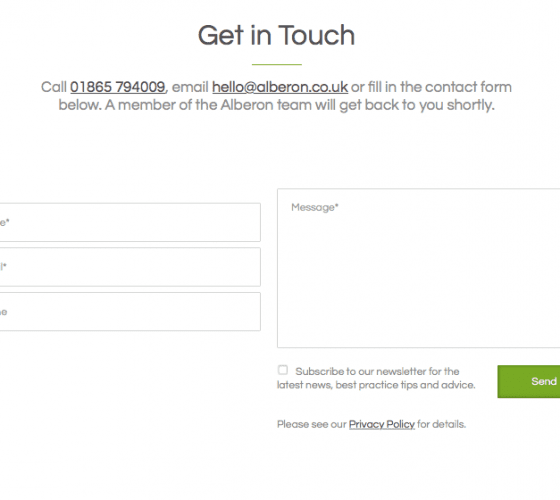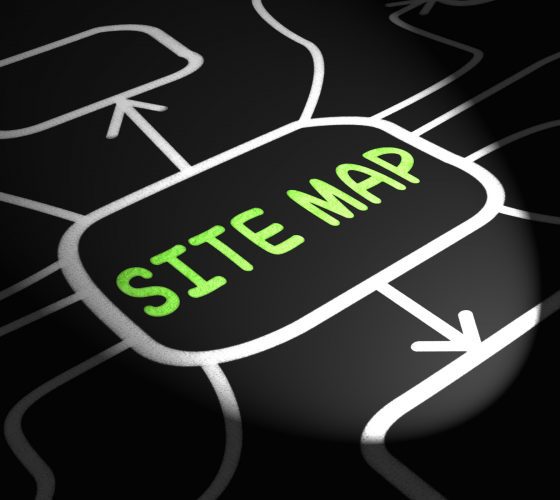Home Articles Web design & development Creating a web design strategy & why it matters
Web design is more than simply how a website looks. A website may look fantastic, but if it’s slow to load, has poor user journeys, or content is hard to find – you will still lose visitors. Effective websites work well and look good.

What are your objectives?
Steve Krug’s best-seller – ‘Don’t make me think’ states that web users want to find what they are looking for as quickly and directly as possible. Visitors don’t have time to read every word and don’t want to think too much – they want to skim key information and find what they need in a matter of seconds. If it takes too long, they will move on. Making it easy for your web visitors to find what they need is about creating a good user experience. To achieve this, you need to be clear about the purpose of your website – understanding who uses the site and what they are trying to achieve. It is about having a good strategy in place.
Identifying and satisfying your customers’ needs underpins every good marketing strategy. If you get this right, you are more likely to achieve your goals. Understanding who your web users are and their needs, then designing your website so they can find what they need quickly and easily should be one of the main aims of your website.

Creating a web design strategy
Having a clear strategy at the start of a project will help keep you on track as you progress through the process. A good web development company will work with you to create your strategy as part of their development process as it will strongly influence the design of your website.
What is a user persona?
When planning a new website, it is easy to lose sight of what you are trying to achieve. In most cases, it is to satisfy the needs of your target audience and encourage them to take action – purchase your product or complete a contact form for example. To effectively do this, you need to know who the people using your website are. You can do this by creating user personas for your typical users.
A user persona is an overview of your target audience – their preferences, habits, likes and dislikes, for example. You can use qualitative and quantitative methods to gather this information, such as customer feedback and analytics tools. How they found your website, which social media channels they access and what type of device they use is all information that can feed into your user profiles.
Consider your marketing strategy
In addition to profiling your target user, look at your marketing strategy and be clear about how the website redesign will help you meet your overall marketing goals. Looking at how effective your current activity is will give you a clear picture of what content and user journeys are effective and what you want to keep going forward. It could also highlight any issues that need fixing.
- Is the website effective at generating leads or enquiries
- What are the key marketing channels that drive traffic to your website?
- What content is popular?
- What are your bounce rates and conversion rates?

Stakeholder research
It may be helpful to gather feedback from your key stakeholders – such as those who use the system and the senior management team. Understanding their requirements early on can save time down the line. Having the tools to gather feedback can be particularly useful. When required, as part of our development process, we undertake stakeholder surveys to determine requirements and use the latest online tools to share ideas and gather feedback.
What is UX design?
User Experience or UX design is an umbrella term used to describe how a user interacts with and experiences a product, system or service. Rather than how a website looks and the colours used, it is concerned with how the website functions. UX design considers how visitors use a website and how it is structured to provide them with the best possible user experience.
Information architecture
Information architecture refers to how web pages and information is structured to fit in with the priorities, messages and goals of a website. There are a few activities that feed into informing how the structure of a website is built.

Sitemaps
The first step is to create a sitemap. A sitemap outlines all the proposed pages on your new website and how they are connected. Having an overview of the entire website means you can see if services are easy to find – perhaps they need to be in the top menu or top fold of the home page for example. Or how many clicks it takes to reach key content. Sitemaps help identify, sort and prioritise your content and key messages and map out user journeys.
What is a user journey?
A user journey is a route a web user takes to reach their goal when using a website. Some believe a well-designed user journey will enable users to achieve their goal in no more than three clicks. But it is less about the number of clicks and more about how clear the journey is. Who is your visitor and what they are looking for? What content is available to fulfil their requirement and how easy it is to find? The user personas you have created will allow you to create content and user journeys that help them achieve their goals when visiting your website.
Following the sitemap, building wireframes can help customers visualise and test some of the proposed user journeys and see how they will work.
What is a wireframe?
Wireframes provide a basic layout of key pages and how they connect to other pages. They allow customers to test some of the user journeys outlined in the sitemap before any graphic design is added. They are not distracted with images, colour or fonts, but can focus solely on the page layout and the site’s navigation, making sure it is clear and includes all the requirements.
At Alberon, we create fully interactive wireframes for clients complete with clickable buttons and include examples from the sitemap to clarify requirements. Customers can interact with the wireframes and click through to follow the proposed user journey.
Prototyping
You could even go a step further and consider having a prototype built. A prototype is a detailed mock-up of a website used to test ideas before the system is built. A prototype allows you to explore the system in detail. You can share it with your key stakeholder groups to gather feedback for the final system build.

Testing
During this stage, customers can also do basic A/B testing to get feedback on early designs by creating two slightly different wireframes. Analytics and heat mapping can also help inform how visitors use the website and what content is popular. Information gathered at this stage all feeds into the final design. Regular testing is useful to keep the project on track as it moves and evolves through the process.
Conclusion
Creating a clear strategy at the beginning of your web design process is hugely beneficial as a web development project progresses. Establishing clear goals to refer back to and clear user personas will keep the project on track and mean you won’t lose sight of what you are trying to achieve with your new website.